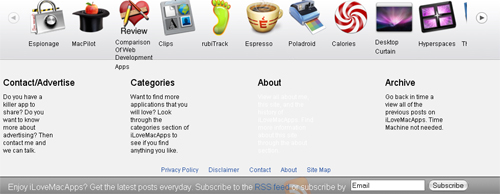“E-Learning is the next major killer application.” Demikian prediksi yang dikemukakan oleh
John Chambers, CEO Cisco Systems, 7 tahun silam. Prediksi itu tak jauh meleset. Seiring perkembangan Internet, penggunaan system e-learning pun tumbuh luar biasa. Internet telah digunakan sebagai tool untuk melakukan pembelajaran. Pakar e-learning dunia Marc J. Rosenberg mendefinisikan e-learning sebagai penggunaan teknologi Internet untuk menyampaikan berbagai macam solusi guna meningkatkan pengetahuan dan kinerja. Jadi, e-learning mengacu pada kegiatan pembelajaran atau transfer informasi dan skill dengan menggunakan media Internet.
Menurut
Allan J. Henderson, e-learning adalah pembelajaran jarak jauh yang menggunakan teknologi computer, atau biasanya Internet (The e-learning Question and Answer Book, 2003. Henderson menambahkan juga bahwa e-learning memungkinkan pembelajar untuk belajar melalui computer di tempat mereka masing- masing tanpa harus secara fisik pergi mengikuti pelajaran kelas.
William Horton menjelaskan bahwa e-learning merupakan pembelajaran berbasis web(yang bisa diakses internet). Dengan kata lain merupakan pembelajaran jarak jauh. E-learning memungkinkan pembelajar menimba ilmu tanpa harus secara fisik menghadiri kelas.
Pembelajar bisa saja berada di Jakarta, sementara “instruktur” dan pelajaran yang diikuti berada di kota lain bahkan di negeri lain. Namun, interaksi masih bisa dijalankan secara langsung ataupun dengan jeda waktu beberapa saat. Jadi, pembelajar bisa belajar dari computer di kantor atau di rumah dengan koneksi internet, sedangkan materi belajar dikelola di Amerika Serikat, Jepang, maupun Inggris. Dengan cara ini, pembelajar bisa mengatur sendiri waktu belajar, dan tempat ia mengakses ilmu yang dipelajari.
Menurut Roy Sembel, Direktur MM Finance and Investment Universitas Bina Nusantara dalam rubric Manajemen diri harian Suara Pembaharuan tanggal 14 Mei 2003, E-learning adalah pembelajaran dengan menggunakan media elektronik. E-learning, seperti juga namanya “Electronic Learning” disampaikan dengan menggunakan media elektonik yang terhubung dengan internet.
E-learning dalam arti luas bisa mencakup pembelajaran yang dilakukan di media elektronik (internet) baik secara formal maupun informal. E-learning secara formal, biasanya adalah pembelajaran dengan kurikulum, silabus, mata pelajaran dan tes yang diatur dan disusun berdasarkan jadwal yang telah disepakati pihak-pihak terkait. Secara informal bisa melalui mailing list, e-newsletter atau website pribadi, organisasi dan perusahaan yang ingin mensosialisasikan jasa, program, pengetahuan atau keterampilan tertentu pada masyarakat luas (biasanya tanpa memungut biaya).
Pembelajaran ditunjang oleh para ahli yang disusun dalam sebuah tim yakni :
Subject Matter Expert (SME), Instructions Designer (ID), Graphic Designer (GD) dan para ahli di bidang Learning Management System (LMS).
SME berfungsi sebagai nara sumber materi yang disampaikan. ID sebagai desainer materi SME menjadi materi e-learning dengan memasukkan unsur metode pengajaran agar materi menjadi lebih interaktif, lebih mudah dan lebih menarik untuk dipelajari. GD mengubah materi teks menjadi bentuk grafis yang enak dipandang, efektif dan mudah untuk dipelajari. Para ahli di bidang LMS mengelola system di website yang mengatur lalu lintas interaksi antar instruktur dan dengan siswa, antarsiswa dengan siswa lainnya. Di sini pembelajar bisa melihat modul-modul yang ditawarkan, bisa mengambil tugas-tugas dan soal-soal yang harus dikerjakan seta melihat jadwal diskusi dengan instruktur secara maya. Pada dasarnya e-learning diciptakan sebagai media self learning.
Apa manfaat e-learning bagi Anda?
Ada tiga hal yang dapat dimanfaatkan dari e-learning ini :
1. Fleksibilitas.
Dapat diakses dari mana saja yang memiliki akses internet. Berbagai tempat juga sudah menyediakan sambungan internet gratis (café, bandara), dengan demikian dalam perjalanan pun, kita bisa memanfaatkan waktu untuk mengakses e-learning.
2. “Independent Learning.”
Pembelajar diberi kebebasan untuk menentukan kapan pembelajaran dimulai, selesai, dan bagian mana dalam modul yang ingin dipelajari terlebih dahulu.
3. Biaya.
E-learning sudah jelas dapat menghemat jumlah biaya yang dibutuhkan dari pada dengan pembelajaran secara langsung di kelas. Berbagai factor misalnya; biaya transportasi dan akomodasi selama belajar (kos misalnya), biaya administrasi pengelolaan, penyediaan sarana fasilitas fisik untuk belajar.
Bagaimana memanfaatkan e-learning secara optimal?
E-learning bisa memberikan manfaat yang optimal jika beberapa kondisi berikut terpenuhi.
1. Tujuan
Sebelum memutuskan untuk mengikuti e-learning, Anda perlu menentukan tujuan belajar Anda, sehingga Anda bisa memilih topik, modul, lama belajar, biaya dan sarana belajar secara elektronik yang sesuai.
2. Pembelajaran
Cara belajar dengan e-learning memberikan peluang untuk menjadi pembelajar independen. Jadi, untuk memdapatkan manfaat optimal dari e-learning, Anda juga harus senang belajar secara independen.
3. Dukungan
E-learning akan lebih mudah jika mendapat dukungan dari orang-orang terkait.







